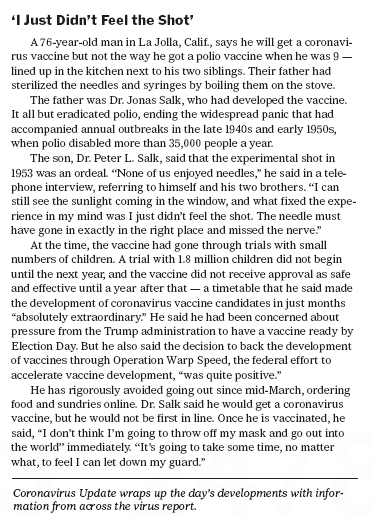The study quoted from below suggests that the main cure for wasteful administrative costs is a “single payer” system, which is a politically correct euphemism for socialized medicine. I suggest that a better cure would be to eliminate the government middle-man, and make the patient be the payer. The patient as payer would seek and buy low-cost cures or therapies, which would shift efforts at healthcare innovation toward lower cost innovations. As has been suggested for education, vouchers could provide poor patients with the means to pay for basic care.
(p. B4) Even a divided America can agree on this goal: a health system that is cheaper but doesn’t sacrifice quality. In other words, just get rid of the waste.
A new study, published Monday [October 7, 2020] in JAMA, finds that roughly 20 percent to 25 percent of American health care spending is wasteful. It’s a startling number but not a new finding. What is surprising is how little we know about how to prevent it.. . .
Teresa Rogstad of Humana and Natasha Parekh, a physician with the University of Pittsburgh, were co-authors of the study, which combed through 54 studies and reports published since 2012 that estimated the waste or savings from changes in practice and policy.
. . .
The estimated waste is at least $760 billion per year. That’s comparable to government spending on Medicare and exceeds national military spending, as well as total primary and secondary education spending.
. . .
The largest source of waste, according to the study, is administrative costs, totaling $266 billion a year. This includes time and resources devoted to billing and reporting to insurers and public programs. Despite this high cost, the authors found no studies that evaluate approaches to reducing it.
For the full commentary, see:
(Note: ellipses, and bracketed date, added.)
(Note: the online version of the commentary has the date Oct. 7, 2019, and has the title “THE NEW HEALTH CARE; The Huge Waste in the U.S. Health System.”)
The print version of the academic article in JAMA mentioned above is:


